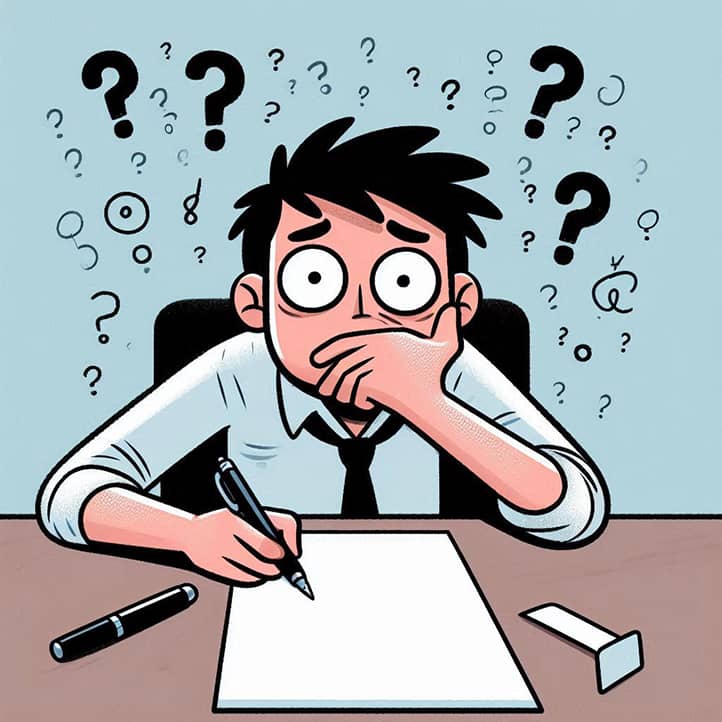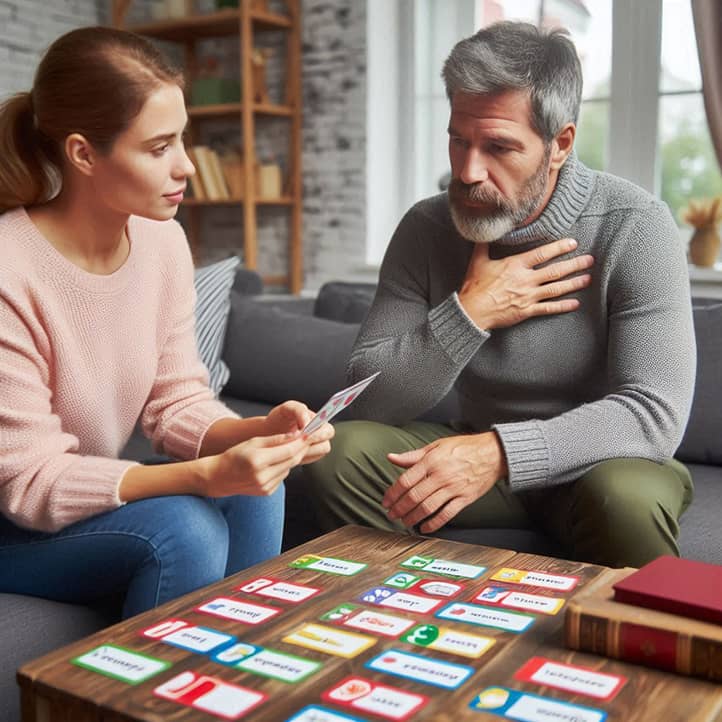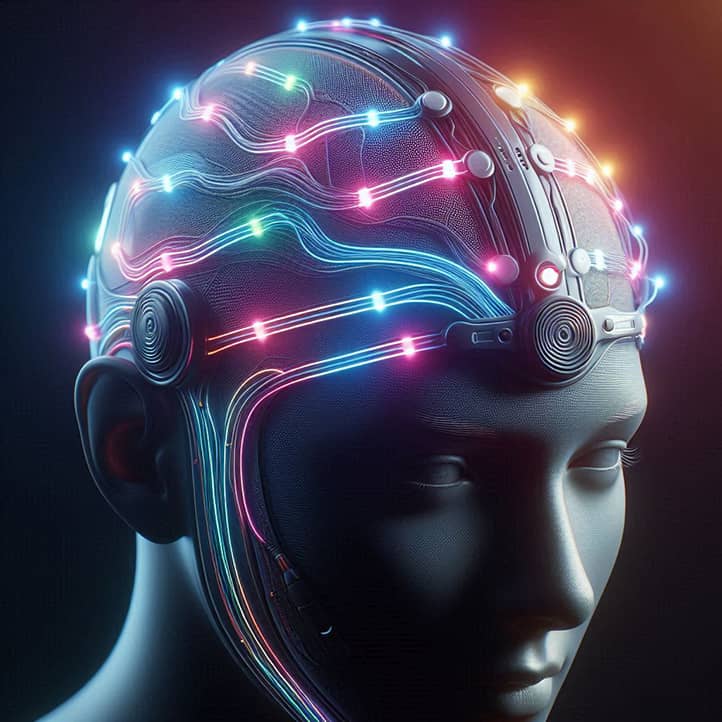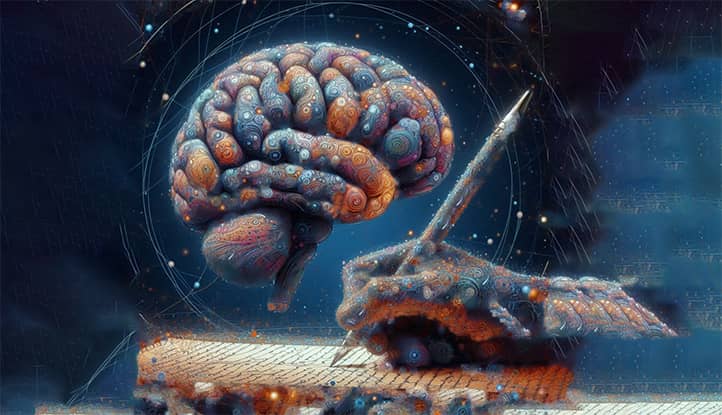In the modern world, where communication and information exchange play a crucial role, the ability to write may seem like a given. However, for some people, even writing simple words can become an insurmountable obstacle. This condition is known as agraphia—a disorder that impairs the ability to write, even when intelligence, vision, and hand motor skills remain intact.
Agraphia is an acquired disorder of written speech, characterized by a partial or complete loss of writing ability. This disorder can manifest in various forms, ranging from an inability to form sentences to difficulties with writing individual letters or words.
The causes of agraphia can vary and include:
- Stroke.
- Traumatic brain injuries.
- Neurodegenerative diseases (e.g., Alzheimer’s disease).
- Brain tumors.
- Infectious diseases of the central nervous system.
There are several types of agraphia, each associated with damage to specific areas of the brain responsible for different aspects of written speech, an integral part of our daily lives. We use it for communication, work, study, and self-expression. Losing this ability profoundly affects a person’s quality of life, professional activities, and social interactions.
The exact prevalence of agraphia is unknown, as it often arises as a consequence of other neurological disorders. However, studies indicate that approximately 30-40% of stroke patients may experience some form of writing impairment. Considering that around 15 million stroke cases are reported worldwide annually, agraphia likely affects a significant number of people.

Causes and Mechanisms of Agraphia
The human brain is a remarkable instrument, capable of creating and interpreting complex symbols and turning them into meaningful messages. Writing, one of humanity’s greatest achievements, requires the coordinated work of many neural networks, each contributing uniquely to this process.
Agraphia disrupts this delicate system of interactions, illustrating the complexity and fragility of the mechanisms underlying our ability for written communication. Studying this disorder not only helps us better understand brain function but also highlights the evolutionary significance of writing in human civilization.
Like a river that changes its course when faced with an obstacle, the brain of a person with agraphia attempts to find alternative pathways for expression. This neuroplasticity, although not always successful, demonstrates the brain’s remarkable ability to adapt and seek new solutions when usual mechanisms are compromised.
Neurobiological Foundations
To understand how agraphia develops, it is essential to explore how the brain controls written speech. Writing is a complex cognitive function requiring the coordination of several brain regions.
How the Brain Controls Written Speech
- Broca’s area (frontal lobe) – responsible for planning and programming speech movements, including writing.
- Wernicke’s area (temporal lobe) – involved in the comprehension of written and spoken language.
- Angular gyrus (parietal lobe) – integrates information from various sensory systems, essential for spelling and letter recognition.
- Supramarginal gyrus (parietal lobe) – processes phonological information critical for writing.
- Visual cortex (occipital lobe) – processes visual information necessary for perceiving and reproducing letters.
- Motor cortex (frontal lobe) – controls hand movements during writing.
Brain Damage and Its Impact on Writing Ability
Different types of brain damage can lead to various forms of agraphia:
- Damage to the frontal lobe can cause difficulties in planning and executing writing movements.
- Lesions in the parietal lobe may result in problems with spelling and letter recognition.
- Disturbances in the temporal lobe can affect the comprehension of written text and the ability to express thoughts in writing.
Types of Agraphia
Agraphia manifests in various forms, broadly categorized into central and peripheral agraphia.
Central Agraphia
Central agraphia involves impairments in language processes and may include the following subtypes:
- Lexical agraphia – difficulty writing irregular words or words with unusual spelling.
- Phonological agraphia – trouble writing unfamiliar words and pseudowords based on sound structure.
- Semantic agraphia – difficulty writing words whose meanings are not understood by the patient.
- Deep agraphia – a combination of lexical and phonological agraphia symptoms.
Peripheral Agraphia
Peripheral agraphia involves impairments in motor planning and execution of writing movements:
- Allographic agraphia – difficulty choosing the correct letter form (e.g., cursive or print).
- Apraxic agraphia – problems with motor planning when writing letters.
- Spatial agraphia – issues with spatial organization of text on a page.
Differences Between Central and Peripheral Agraphia
The main difference between central and peripheral agraphia lies in the level of the writing process affected:
- Central agraphia impacts language processes, such as word choice, spelling, and grammatical structure.
- Peripheral agraphia affects processes related to the physical act of writing, such as letter selection and formation, as well as spatial arrangement of text.
Understanding these differences is crucial for accurate diagnosis and effective treatment selection.

Diagnosing Agraphia
Identifying agraphia is not merely a medical procedure but an investigation where each detail can be critical. Specialists working with patients must decipher subtle nuances in handwriting, behavior, and speech to create a complete picture of the disorder.
Modern methods for diagnosing agraphia resemble a multilayered puzzle, where each level reveals new aspects of the problem. From traditional writing tests to complex neuroimaging studies, each method contributes uniquely to understanding the individual nature of the disorder.
The diagnostic process for agraphia often marks the first step toward a patient re-evaluating their identity and approach to communication. It is a moment when a person begins to perceive their abilities and limitations in a new light, which may become a starting point for personal transformation and exploring new forms of self-expression.
Symptoms and Signs of Agraphia
Agraphia may present in various ways depending on the type and severity of the disorder. Here are some of the most common symptoms:
- Difficulty writing letters or words despite intact intelligence and hand motor skills.
- Substitution or omission of letters while writing.
- Incorrect letter placement within words.
- Spelling difficulties, particularly with complex or irregular words.
- Problems with grammatical structure in sentences.
- Inability to write spontaneously while retaining the ability to copy text.
- Disturbance in the spatial arrangement of text on the page.
Examples of Manifestations in Patients
- A patient with lexical agraphia may write simple, regular words correctly but struggle with words that have unusual spelling.
- In phonological agraphia, the patient may write familiar words but have difficulty with new or non-existent words.
- A person with apraxic agraphia may know how a word is spelled but experience difficulty with the physical act of writing letters.
- In spatial agraphia, the patient may write words overlapping or going off the line.
Diagnostic Methods
Diagnosing agraphia requires a comprehensive approach and typically involves several stages.
Psychological and Neuropsychological Assessments
- Tests for writing letters, words, and sentences by dictation.
- Spontaneous writing tasks (e.g., writing a short story or picture description).
- Text copying tests.
- Spelling and grammar assessments.
- Tests for writing numbers and mathematical expressions.
- Tasks for spatial organization in writing.
These tests help determine the type and severity of agraphia, as well as identify preserved skills that can support rehabilitation.
Use of MRI and Other Brain Imaging Techniques
To identify the causes of agraphia and locate brain damage, various neuroimaging methods are used:
- Magnetic Resonance Imaging (MRI) – provides detailed images of brain structures to identify damaged areas.
- Functional MRI (fMRI) – shows activity in different brain regions during writing tasks.
- Computed Tomography (CT) – useful for quickly identifying hemorrhages or large brain injuries.
- Positron Emission Tomography (PET) – assesses the metabolic activity of various brain areas.
- Electroencephalography (EEG) – helps evaluate electrical brain activity and detect possible dysfunctions.
Combining these methods offers a complete picture of the patient’s brain condition and aids in selecting the most effective treatment strategy.

The Impact of Agraphia on a Patient’s Life
Agraphia, as an invisible barrier, divides a person’s life into “before” and “after,” prompting a rethinking of many aspects of daily life. Simple tasks, once automatic, now require conscious effort and new strategies, turning each day into a kind of quest to overcome obstacles.
The loss of the ability to write can become a catalyst for profound changes in a person’s self-perception. It is a challenge not only to practical skills but also to self-esteem, pushing individuals to seek new sources of confidence and ways of self-fulfillment. Many patients note that agraphia, paradoxically, opened new horizons for them, encouraging the development of previously hidden talents and abilities.
In the digital age, agraphia takes on a new dimension, impacting not only traditional writing but also interaction with modern communication tools. This creates unique challenges and opportunities, requiring patients and those around them to take a creative approach to solving daily tasks in a world where written communication plays an increasingly vital role.
How Does Agraphia Affect Emotional Well-being?
- Frustration and Irritability: The inability to express thoughts on paper can lead to strong feelings of frustration.
- Lowered Self-Esteem: Patients may feel less competent or intellectually inadequate.
- Depression: The loss of an important skill can contribute to depressive states.
- Anxiety: Fear of situations requiring written communication can cause increased anxiety.
- Isolation: Some patients may avoid social contacts due to their condition.
Social Consequences and Challenges in Daily Life
- Professional Challenges: Many jobs require writing skills, which can lead to employment difficulties or issues in fulfilling job responsibilities.
- Educational Limitations: Agraphia can make it challenging to pursue education or professional development.
- Communication Barriers: Difficulties with writing messages, emails, or filling out forms may restrict communication.
- Everyday Issues: Struggles with making shopping lists, completing forms, or signing documents can complicate daily life.
- Recreational Limitations: Some hobbies, like journaling or letter writing, may become inaccessible.
Patient Stories
Real stories from people living with agraphia provide better insights into how this condition affects one’s life and which coping strategies can be effective.
- Maria’s Story, 45 years old: Maria worked as an editor in a large publishing house when she suffered a stroke that led to agraphia. “At first, I couldn’t believe I could no longer write. It felt like losing part of myself,” she shares. Maria underwent a long rehabilitation process and learned to use speech recognition software for working with texts. Although she couldn’t return to her previous job, she found a new role as a content consultant in a digital publishing house.
- Alexey’s Story, 32 years old: Alexey developed agraphia after a traumatic brain injury. As a programmer, he faced significant issues at work. “I could read code but couldn’t write it. It was incredibly uncomfortable,” he recalls. Alexey started using specialized programming tools with voice input and gradually adapted to this new way of working. “It took time, but now I can program almost as efficiently as before,” says Alexey.
Experiences and Coping Strategies for People Living with Agraphia
- Use of Technology: Many patients adapt successfully by using speech recognition software, special keyboards, or tablet applications.
- Alternative Communication Methods: Some people with agraphia learn to use verbal communication or gestures more effectively.
- Psychological Support: Working with a psychologist helps manage the emotional effects of agraphia and develop new coping strategies.
- Retraining and Career Change: In some cases, patients acquire new professional skills that are less dependent on writing.
- Social Support: Many find the support of family, friends, and support groups essential in the adaptation process.
- Ongoing Practice: Regular exercises and training help maintain and improve writing skills.
These stories show that despite the serious challenges posed by agraphia, many patients find ways to adapt and lead fulfilling lives. Their experience emphasizes the importance of a comprehensive approach to treatment and rehabilitation, including not only medical assistance but also psychological support and the use of modern technologies.

Treatment and Rehabilitation Methods
The journey to restoring writing skills in agraphia can be compared to learning to play a musical instrument: it requires patience, regular practice, and an individual approach. Each patient, like a musician, must find their unique “handwriting” in the rehabilitation process, experimenting with different techniques and methods.
Modern approaches to treating agraphia increasingly include elements of gamification and virtual reality, turning rehabilitation into an engaging journey. This not only boosts patient motivation but also allows for more natural and diverse scenarios for practicing writing skills.
Integrating agraphia treatment methods with overall cognitive function improvement opens new perspectives in rehabilitation. Specialists increasingly view the restoration of writing skills not in isolation but in the context of general brain function enhancement, leading to unexpectedly positive effects in other areas of the patient’s life.
Medication Treatment
Although there are no specific drugs for treating agraphia, certain medications can be helpful depending on the cause of the disorder:
- Neuroprotectors: Medications that protect nerve cells from damage may be useful in cases of agraphia caused by a stroke or brain injury.
- Nootropics: Drugs that enhance cognitive function can be beneficial in some cases, especially with mild forms of agraphia.
- Antidepressants may be prescribed to treat coexisting depression, which often occurs in patients with agraphia.
- Medications for Treating the Underlying Condition: For example, in agraphia caused by neurodegenerative diseases, appropriate medications may be used.
Surgical Methods for Certain Types of Agraphia
In rare cases, surgical intervention may be considered:
- Tumor Removal: If agraphia is caused by a brain tumor, removing it may lead to an improvement in the condition.
- Shunting: For agraphia related to hydrocephalus, a shunt may be required to normalize intracranial pressure.
- Neurostimulation: Experimental methods, such as transcranial magnetic stimulation, are being studied as potential ways to improve writing function.
Speech and Cognitive Therapy
- Speech Therapy: Specialized exercises to improve writing skills, including training fine motor skills and movement coordination.
- Cognitive-Linguistic Therapy: Aimed at enhancing language skills, including those related to written speech.
- Compensatory Methods: Training alternative ways to express thoughts in written form.
- Multimodal Approach: Combining different types of therapy for the best results.
Exercises and Training for Restoring Writing Skills
- Graphomotor Exercises: Training in writing letters and words.
- Spelling Practice: Exercises in spelling and grammar.
- Text Composition Tasks: Gradually increasing in complexity from simple sentences to complex texts.
- Computer Programs: Special applications for practicing writing skills.
- Visualization Techniques: Using mental images to improve the writing process.
Use of Technology and Assistive Devices
- Speech Recognition Software: Allows conversion of spoken words into written text.
- Predictive Keyboards: Makes typing easier by predicting words and phrases.
- Electronic Pens and Tablets: Help in practicing writing skills and can convert handwritten text into printed form.
- Specialized Applications: Programs for practicing writing and enhancing cognitive functions.
- Adaptive Input Devices: Keyboards and mice designed to meet the specific needs of patients with agraphia.
It’s essential to note that the effectiveness of treatment and rehabilitation largely depends on the individual characteristics of the patient, as well as the type and severity of agraphia. Therefore, a treatment plan should be developed individually, considering all factors and the specific needs of each person.

Modern Research and Perspectives
Research on agraphia lies at the intersection of neurobiology, linguistics, and cognitive psychology, creating a unique interdisciplinary field. This blend of scientific approaches unveils new insights not only into the mechanisms of writing but also into the broader principles of brain function.
The advancement of artificial intelligence and machine learning technologies provides researchers with powerful tools for analyzing large volumes of data and identifying hidden patterns. This could lead to groundbreaking discoveries in diagnosing and treating writing disorders and in developing more effective assistive technologies.
Agraphia research increasingly extends beyond a purely medical approach, addressing issues of social adaptation and quality of life for patients in the digital age. This shift introduces new ethical and practical challenges, demanding a comprehensive strategy to support people with writing impairments in a rapidly changing world.
New Approaches and Techniques in Agraphia Research
- High-resolution functional MRI: Allows for a detailed study of brain activity during writing, identifying subtle disruptions in neural connections.
- Diffusion tensor imaging (DTI): Helps explore the integrity of brain white matter, essential for understanding connection disruptions between brain regions in agraphia.
- Magnetoencephalography (MEG): Provides insight into the temporal dynamics of brain activity during writing with high time resolution.
- Transcranial magnetic stimulation (TMS): Used to study the causal relationships between specific brain regions and writing skills.
- Genetic studies: Aim to identify potential genetic factors that influence the development and progression of agraphia.
Perspectives on Utilizing Neuroplasticity
Neuroplasticity, the brain’s ability to change and adapt, offers new possibilities in treating agraphia:
- Targeted neurostimulation: Using non-invasive brain stimulation methods to activate specific neural pathways related to writing.
- Neurofeedback: Training patients to control brain activity to improve writing skills.
- Combined rehabilitation methods: Blending traditional therapy with neuroplasticity-based methods for better outcomes.
- Personalized treatment protocols: Developing individualized rehabilitation strategies based on a patient’s specific neuroplasticity data.
Outstanding Questions
- The exact mechanisms of interaction between various brain areas during writing.
- The role of subcortical structures in writing processes and their impact on agraphia.
- The influence of bilingualism on the development and progression of agraphia.
- Long-term effects of agraphia on cognitive functions and quality of life.
- Optimal duration and intensity of rehabilitation programs.
Potential Breakthroughs in Agraphia Treatment
- Neuroprosthetics: Developing implantable devices capable of restoring disrupted neural connections.
- Gene therapy: Potential use of genetic methods to correct abnormalities related to agraphia.
- Stem cells: Exploring the possibilities of using stem cells to repair damaged brain areas.
- Artificial intelligence: Developing advanced systems for speech recognition and text conversion, along with predictive and corrective writing aids.
- Virtual and augmented reality: Creating immersive environments for more effective rehabilitation of patients with agraphia.
These research directions open new horizons for understanding and treating agraphia, offering hope for more effective support for patients in the future.

Conclusion
Agraphia is not just a writing challenge but a complex disorder impacting multiple facets of a person’s life. Today, treating agraphia is a multifaceted process that combines medical, therapeutic, and technological methods. Research in neuroplasticity appears especially promising, offering new possibilities for patient rehabilitation.
It is crucial to recognize that agraphia is more than a medical issue—it deeply affects an individual’s professional life, social interactions, and emotional well-being. Thus, understanding the mechanisms of agraphia and developing effective treatments are of immense importance, not only for individual patients but also for society as a whole.
Successful rehabilitation of agraphia patients significantly improves their quality of life, reduces economic losses linked to disability, eases the healthcare system burden, and supports more comprehensive social integration of people with disabilities.
Despite the seriousness of the issue, agraphia remains a lesser-known disorder to the general public. Raising awareness of this condition is essential for early detection, research support, creating a more inclusive social environment, and fostering the development of new assistive technologies.
The need for further research and support for patients with agraphia is undeniable. Each of us can contribute to addressing this issue—whether by spreading information, participating in volunteer programs, or supporting scientific research.
Agraphia is a challenging disorder, but with the right approach, societal support, and the constant advancement of science and technology, we can significantly improve the lives of people who face this challenge. Ultimately, our understanding and attitude toward agraphia reflect our commitment to creating a more inclusive and compassionate society, where everyone has the opportunity to express themselves fully, regardless of any obstacles.




